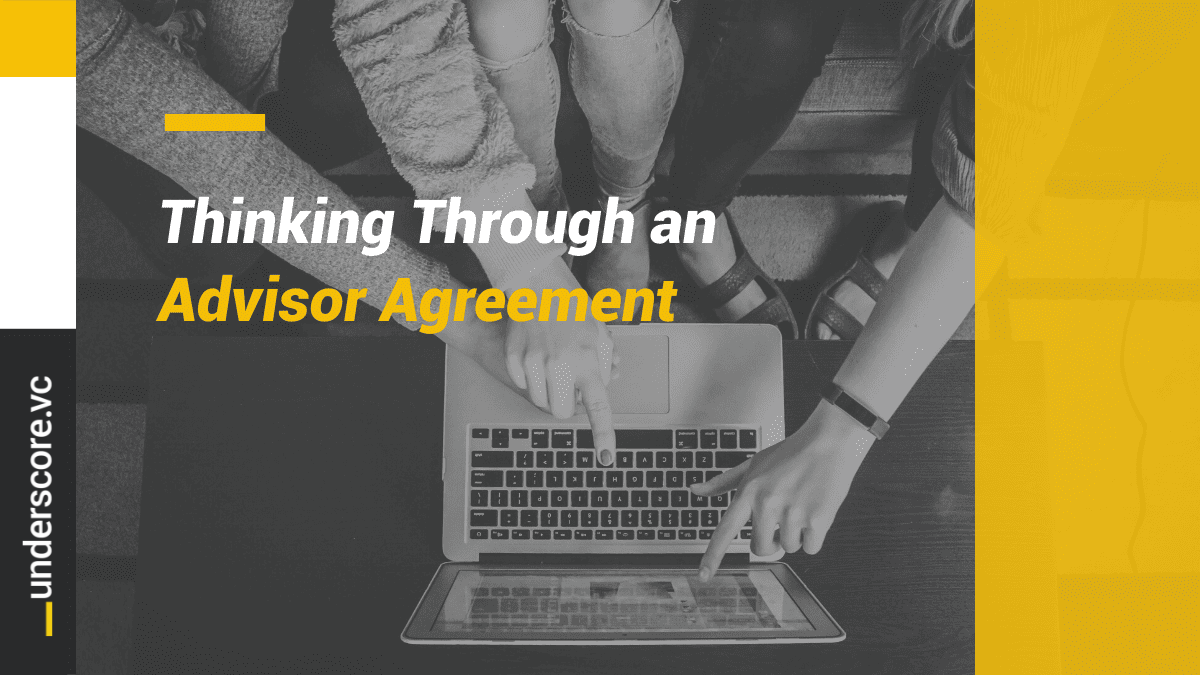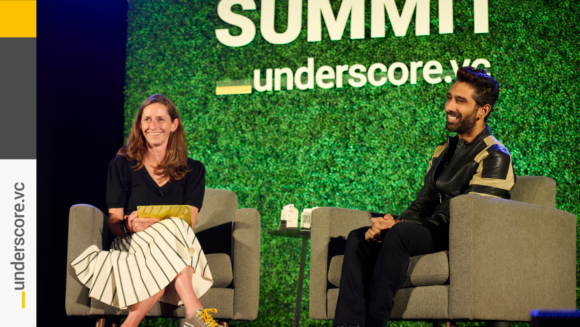Recently, a company in our portfolio brought on an advisor. These co-founders are terrific. They have a big vision and an incredible drive to get things done. So it felt like fate when they connected with a perfect advisor match—someone with extensive early-stage experience in their industry, with the time and interest to work with them.
But when he shared his fee and stock option expectations, the co-founders almost fell off their chairs. Talk about sticker shock. Clearly, expectations between the co-founders and the potential advisor needed to be aligned.
In this example, the advisor imagined digging in and doing several hours of work each month: attending meetings, figuring out pricing and packaging, advising GTM strategy, and making intros to prospective customers. Meanwhile, the co-founders envisioned a lighter touch relationship, where they could have occasional check-ins, bounce some ideas off of him, and ask for a few intros.
After more discussion, they were able to structure a win-win agreement where both parties were happy. But how can you avoid some of this misalignment up front? Think through these six questions as you map out your plan for an advisor.
1. What kind of advisor do you need?
There are “advisors” in name only, people whose headshots you throw on a slide for name recognition and credibility. A CEO mentor might meet with you once a month to help you navigate the highs and lows of leading a company. On the other hand, some people will dig into your business alongside you, helping you to actually execute.
This could be a strategic advisor, a business advisor, or a technical advisor. “These things can come in all forms, and the incentives for each setup are a bit different,” says John Pearce, a co-founding partner of Underscore VC.
2. How will this person add value to your business?
Once you’ve identified the role for this person, think through how they’ll add value. “Bringing any person into your business comes with risk, so you have to make sure they compensate for the risk,” says John.
If this advisor does what they say they’ll do, what impact will that have on your business, revenue streams, etc.?
For example, imagine your company is worth $10M. Let’s say this person has the potential to design a pricing and packaging strategy that enables you to 3x your sales. But what if they could 5x the business? 10x the business?
“Go down the path to think about what this person’s impact looks like,” says John. But be sure to be realistic—understand your assumptions and know how you’ve arrived at your estimate.
“Look at it from an ROI perspective,” says John, “What’s the likelihood that they’ll earn their keep, and then some?”
3. What’s in your current plan?
Next, take a look at your current business plan. What milestones are you targeting next year, and what expenses have you planned for? How do this person’s talents and abilities align with what you plan to accomplish in the next year?
Imagine you were going to hire a customer success person to reduce churn. But if you bring on the right advisor, could you tweak your product or processes to avoid churn instead? Or could you hone your ideal customer profile (ICP) and sell to stickier clients?
Ultimately, think about how you’re filling a gap in the business that provides exponential value.
4. How do you compensate them?
If an advisor is going to impact your business meaningfully, it’s, of course, only fair to compensate them accordingly. But there are a lot of variables here. To think through the right balance, consider:
- What would be the cash value?
- What would be the stock value?
- How do you find the right mix?
- Does the stock vest?
- What is the vesting cliff?
As with most startup decisions, bringing on an advisor comes with risk. “Founders will spend so much time with the advisor, and you can’t get that time back,” says John.
So think about how you can structure compensation to minimize the risk. For example, if there’s a risk that an initiative could fail in X amount of time, can you add a vesting cliff that covers that timeline?
5. How will you protect sensitive information?
“With advisors, you only get out what you put in,” says John. Asking the right questions and sharing information will help them be a better advisor.
“But you also have to be careful with what information you share,” adds John. That includes business information, IP—and customer information, especially.
Decide early on what you will or will not share. “Everything is a trust business,” says John. “You want to make sure that you’re trusting them and that they’re trusting you.” Reflect on what you may need in place to maintain this trust.
- Is a handshake enough?
- Will you need an NDA?
- A contract to outline work expectations?
A legal agreement can help clarify potential gray areas and avoid misunderstandings.
6. How will you stay aligned?
“Advisors only thrive inside structure, and as a founder, you need to create it,” says John. “It won’t happen through osmosis.” Think through how you’ll structure the relationship.
- What will their specific deliverables be?
- How many hours do you expect them to put in?
- What is your check-in cadence?
- How should they share updates on their progress?
- Will the advisor participate in offsites?
- If so, how?
“It’s basic stuff,” says John. “But it can fall by the wayside if you’re not intentional about it.” Give updates. Provide feedback. And always have an agenda for meetings.
Furthermore, just because your advisor is engaged now, doesn’t mean they always will be. Give them periodic updates after your primary engagement ends so they know what’s happening.
“Companies live a long time and will have different challenges along the way,” says John. “There will come another time when their expertise and availability will match again. Enable them to know when they could reengage.”
Thinking through these six questions will help you set yourself and your advisor up for success.












